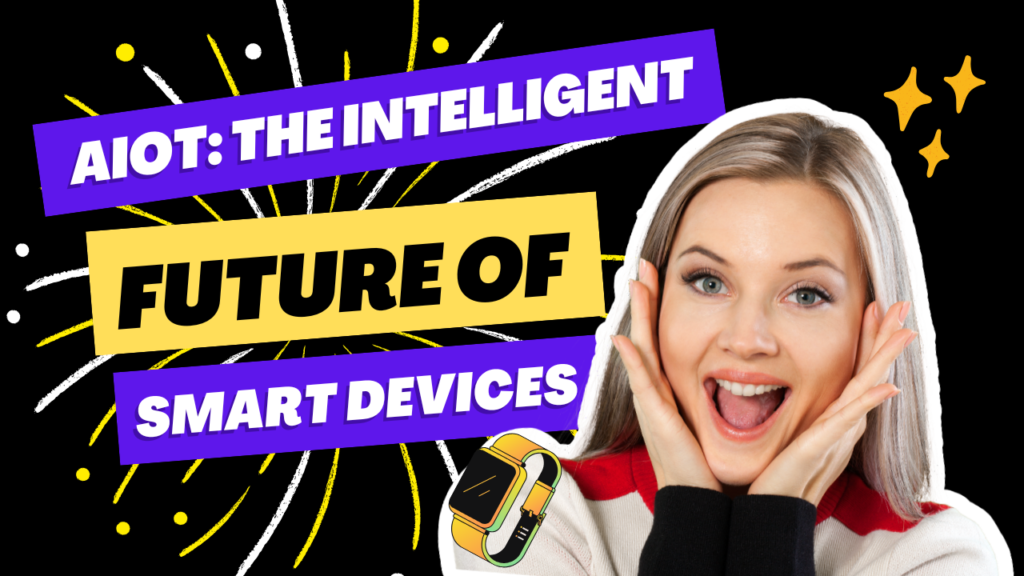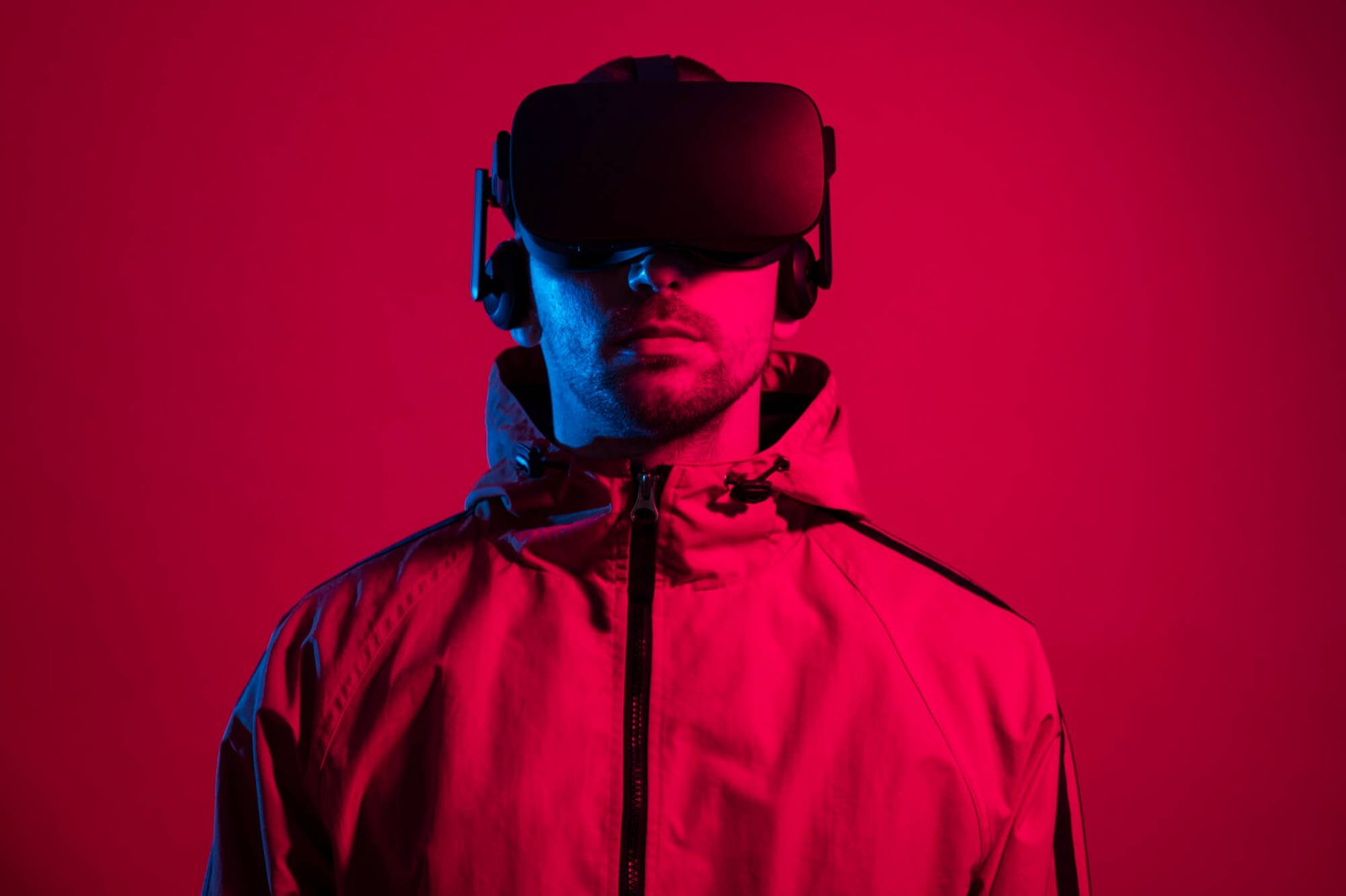Imagine a world where your home learns your habits, your car predicts traffic patterns, factories optimize themselves, and cities run efficiently—without human intervention. This is not science fiction; this is AIoT (Artificial Intelligence of Things)—the powerful fusion of Artificial Intelligence (AI) and the Internet of Things (IoT).
By combining AI’s decision-making abilities with IoT’s connectivity and real-time data collection, AIoT is transforming industries, automating everyday tasks, and making the world smarter.
From self-optimizing smart homes and AI-driven healthcare monitoring to intelligent factories and smart cities, AIoT is revolutionizing the way technology interacts with the world.
Let’s explore this next-gen technology and see how AIoT is shaping the future! 🚀
🤖 What is AIoT (Artificial Intelligence of Things)?
AIoT is the integration of Artificial Intelligence (AI) with the Internet of Things (IoT).
- IoT connects devices, collects vast amounts of real-time data through sensors, and transmits it over the internet.
- AI processes and analyzes this data, enabling devices to think, learn, and make intelligent decisions without human input.
🔑 Key Features of AIoT:
⚡ Smart Decision-Making – AI enables IoT devices to make real-time, automated decisions, reducing human involvement.
📡 Advanced Data Analysis – AI analyzes massive IoT-generated data to find patterns, predict trends, and optimize performance.
🚀 Automation & Self-Learning – AI-powered IoT devices continuously learn and improve over time.
🛡 Enhanced Security – AI strengthens IoT security by detecting anomalies, preventing cyberattacks, and securing data.
🌍 Increased Efficiency – AIoT reduces energy consumption, maintenance costs, and operational delays in industries.
🌟 How AI and IoT Work Together
AIoT enhances IoT devices by adding machine learning (ML), deep learning, and advanced analytics, making devices more autonomous and intelligent.
🔄 Step-by-Step Process:
1️⃣ IoT Devices Collect Data
Sensors and smart devices (cameras, wearables, industrial robots, etc.) gather real-time data from the environment.
2️⃣ Edge or Cloud Processing
- In Edge AIoT, AI algorithms run directly on devices (fast, low latency).
- In Cloud AIoT, data is sent to the cloud for advanced AI analysis (powerful, but slower).
3️⃣ AI Analyzes & Learns
AI processes the data, identifying patterns, making predictions, and learning over time.
4️⃣ AI Makes Smart Decisions
Based on the analysis, AIoT devices act automatically—adjusting temperatures, optimizing traffic, or even detecting diseases.
5️⃣ Continuous Improvement
AIoT self-improves using feedback from previous actions, making devices smarter over time.
🔥 AIoT in Action: Real-World Applications
AIoT is already transforming industries, making them smarter, more efficient, and data-driven.
🏠 1. Smart Homes & AI-Powered Assistants
🏡 AI-Driven Smart Homes – Devices like Google Nest, Amazon Alexa, and Apple HomeKit learn your habits and automate lighting, temperature, and security.
🔊 Voice Assistants with AIoT – AI-powered IoT assistants understand voice commands, adjust home settings, and control smart devices seamlessly.
💡 Energy Efficiency – Smart homes use AIoT to reduce energy waste by adjusting power usage based on real-time activity.
🚗 2. AIoT in Smart Transportation & Self-Driving Cars
🚦 AI-Powered Traffic Systems – AIoT optimizes traffic signals and predicts congestion, reducing travel time.
🚘 Autonomous Vehicles – Self-driving cars use AIoT to process real-time sensor data, making instant driving decisions.
🚛 Smart Fleet Management – AIoT optimizes delivery routes, fuel efficiency, and vehicle maintenance, saving businesses millions.
🏥 3. Healthcare & AIoT Wearables
🩺 Smart Wearables (AI-Powered Health Monitoring) – AIoT wearables like smartwatches track heart rates, predict health risks, and alert doctors in emergencies.
🧬 AI-Assisted Disease Detection – AIoT scans X-rays, detects early-stage diseases, and suggests treatments in real-time.
🏥 Smart Hospitals – AIoT monitors patient health remotely, manages hospital equipment, and optimizes operations.
🏭 4. Industrial AIoT (Smart Factories & Automation)
🤖 AI-Driven Manufacturing – AIoT-powered machines predict equipment failures, reducing downtime and maintenance costs.
🔧 Automated Quality Control – AIoT identifies defective products instantly, improving factory efficiency.
🚀 Robotic Process Automation (RPA) – AIoT-driven robots work autonomously, boosting productivity and accuracy.
🌍 5. AIoT in Smart Cities
🚦 Smart Traffic & Energy Management – AIoT reduces traffic congestion, saves electricity, and optimizes urban infrastructure.
📹 AI-Powered Surveillance – AIoT cameras detect suspicious activities in real-time, enhancing security.
🌱 Environmental Monitoring – AIoT tracks air pollution, water quality, and weather conditions, protecting urban ecosystems.
⚠️ Challenges & Risks of AIoT
Even though AIoT is revolutionary, it comes with some challenges:
🔐 Cybersecurity Risks – AIoT devices collect sensitive data, making them prime targets for hacking.
📡 Data Privacy Concerns – AIoT continuously gathers personal information, raising ethical concerns about data misuse.
⚡ High Energy Consumption – AIoT-powered devices need efficient energy management to reduce power usage.
🔄 Complex Integration – Connecting AI with IoT requires high-tech infrastructure and compatibility across different systems.
Despite these challenges, tech giants like Google, Tesla, Amazon, and Microsoft are investing billions in making AIoT safer, smarter, and more efficient.
🔮 The Future of AIoT: What’s Next?
🚀 AIoT-Powered Cities – Future cities will be fully automated, with AI managing traffic, energy, waste, and security.
🧠 Brain-Connected AIoT – Wearable AIoT devices may connect directly to the human brain, enhancing cognitive abilities.
🛒 AIoT-Driven Retail – Stores will use AIoT for automated checkouts, personalized recommendations, and smart inventory tracking.
🌍 AIoT for Climate Action – AIoT will optimize renewable energy, track deforestation, and monitor global warming.
🤖 Hyper-Intelligent AIoT Systems – Future AIoT devices will think like humans, making instant, intelligent decisions without internet connectivity.
🎯 Final Thoughts: AIoT – The Ultimate Smart Revolution
AIoT is bridging the gap between the digital and physical world, making technology smarter, more intuitive, and self-learning. By combining AI’s intelligence with IoT’s connectivity, we are building a future where devices don’t just collect data—they think, predict, and act on their own.
From smart homes and self-driving cars to AI-powered healthcare and intelligent factories, AIoT is shaping a hyper-connected, AI-driven world.

